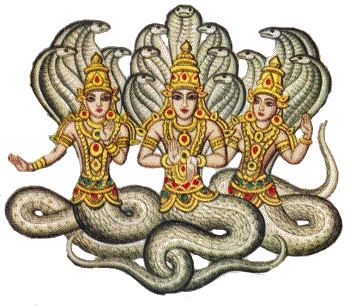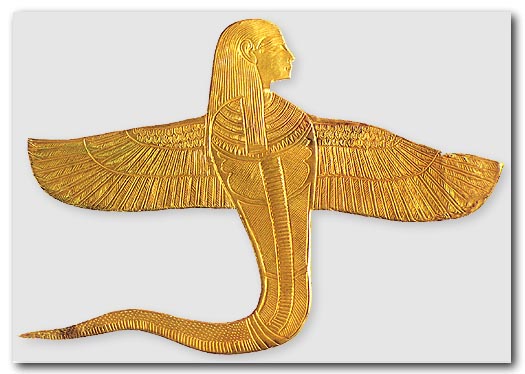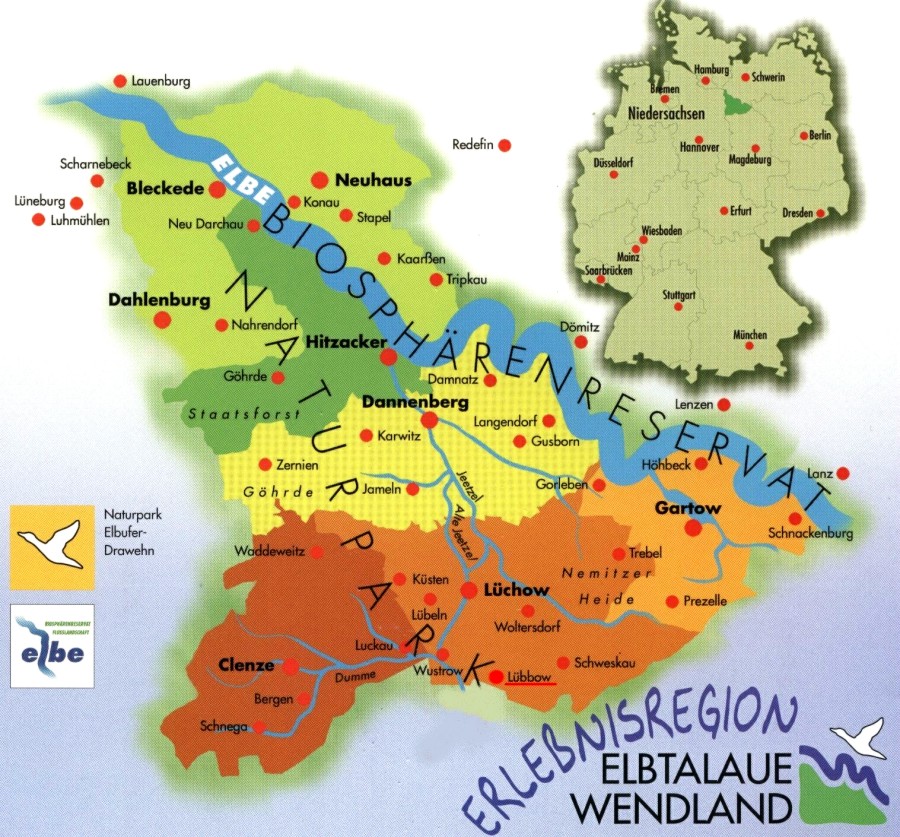Germanic-speakers were not the original IE inhabitants of territory which is now Poland, they came during middle-to-late Iron Age as immigrants or invaders and in relatively small numbers.
There is a biological population continuity in Poland since the Bronze Age until nowadays - neither Germanic immigration nor Slavic immigration altered it considerably.
Language & culture of population of Poland were changing few times, but population - in its main core (not counting quite numerous admixtures from migrating peoples) - is similar as in times of Biskupin-builders:
http://www.staff.amu.edu.pl/~anthro/pdf/mono/vol012/01piontek.pdf
East Germanic-speaking tribes which lived in Poland in the Iron Age were not very Germanic in genetic terms.
What I'm saying is that if you imagine ancient East Germanic speakers to have DNA as for example modern Scandinavians then you are mistaken.
Those tribes (Goths, Vandals, etc.) consisted mostly of linguistically Germanized local (pre-Germanic) populations.
Because those tribes did not have Germanic genes, modern scholars cannot find genetic traces of "Germanic" migrations:
"Rethinking barbarian [East Germanic] invasions through genomic history" by Patrick Geary:
Part 1:
https://video.ias.edu/node/5304
Part 2:
https://video.ias.edu/topology/2013/1002-PatrickGeary
Geary was unable to find Germanic DNA in places where East Germanic tribes settled because... East Germanic tribes were not genetically Germanic. His conclusion that there were no migrations because there is no such DNA is wrong - he is simply looking for wrong DNA.
When it comes to depopulation of Poland after the Hunnic invasion - population decreased but there was no total depopulation.
According to estimations by historian Adam Sengebusch the population of Poland (within modern borders) was:
Late 4th century AD (shortly before the Hunnic invasion) - ca. 600,000 people (2 people per 1 km2)
After the Hunnic invasion and subsequent emigration - between ca. 150,000 and ca. 250,000 people
According to archaeologist-prehistorian K. Godłowski, depopulation caused by the Huns and by emigration to the Roman Empire was 2/3.
So population was reduced to 1/3 of previous level, according to Godłowski. He doesn't say how big it was before depopulation.
==============================
Coming back to John Speed's description of Ancient Poland's inhabitants as "Sauromatae":
Of course inhabitants of Poland were not speakers of Sarmatian (a branch of Iranian) language.
They were rather speakers of an extinct family of Indo-European languages which can be called "Venedic languages".
Those languages were perhaps closely related to Balto-Slavic languages.
But part of Europe where they lived was called Sarmatia Europaea, and was located to the east of part called Germania Magna.
http://sarmatia-europaea.vot.pl/
In this sense all tribes who lived in Sarmatia Europaea were Sarmatians, no matter what language they spoke. Just like English, Welsh, Scottish, etc. people are all British no matter what language they speak and what culture they have, because they live in the region of British Isles.
================
Bronze Age Corded Ware burials from Eulau, East Germany, revealed R1a haplogroup. And those people were not Germanic-speakers.
Bronze Age inhabitants of Poland, Biskupin-builders, were most certainly also mostly R1a - just like modern inhabitants of Poland.
================
As for Medieval immigration of German-speakers to Poland and Bohemia:
Czechs have more R1b than Poles but most of this R1b is not originally Germanic.
Austria-Bohemia were Celtic (Halstatt Culture) before they became Slavic & Germanic.
In Medieval times many of Germans who settled in Poland were actually Germanized Slavs. For example father of certain Albrecht Bart (an important burgher in Wroclaw, Lower Silesia) was a Germanized Slavic Sorb, in Latin: "de genere Czurbanorum a Thethonia" ("by origin a Sorb from Teutonia") and his mother wasn't Germanic, but Romance - Waloon (in Latin: "ex parte matris Romanus, a platea Romanorum Wratizlavie").
There was a district of Waloon weavers (platea Romanorum) in Wroclaw (Wratizlavie) at that time.
As for Albrecht Bart - his parents were a culturally Germanized Slavic Sorb + a Waloon woman, and he married a Polish woman, daughter of Palatine Dzierżko-Peregryn (whose brother was Castellan of Lebus Przybyslaw and whose nephew was Bishop of Wroclaw Tomasz).
Son of mentioned Castellan Przybyslaw - his name was Zbylut - married a German woman from Wezenborg family.
Germanic-speaking doesn't mean genetically Germanic. And change of material culture does not indicate total population replacement. Often you don't even need the change of power (people at the top) for a change of material culture. Trade and peaceful cultural exchange also take place.
Half of current eastern Germany was Slavic
Even today people in eastern Germany and in Austria have a lot of R1a haplogroup, which was most common among Medieval West Slavs.
Also I2a haplogroup is very typical for Slavic populations. Of course it would be a mistake to associate haplogroups with ethnicities, but are there are certain statistical correlations, which allow us to arrive at certain conclusions and generalizations concerning their origins.
Also Slavic surnames are common in Germany - some of them are Polish in origin but some are from other Slavic groups.
For example here is surname "Janke", distribution of which indicates that it is Obotrite-Veleti rather than Polish, Pomeranian or Sorbian:
Comparison of R1a and R1b haplogroups among people in various German, Austrian, Czech and Polish cities today:
Map shows modern-day R1b / R1a proportions among inhabitants of 25 selected cities located in Central Europe:
Dark green = Polish and Czech cities
Light green = German & Austrian cities with ~20% (Greifswald) up to ~43% (Graz) of R1a
Dark red = other cities in Germany
What can be observed is that former Slavic areas in Germany & Austria correlate with high % of people with R1a haplogroup:
Graz in Early Middle Ages was a Slavic city (burgh) of the Principality of Carantania, which was called Gradec (in Old Slovene language). Graz has so high percent of people with R1a haplogroup, that it is obvious that they are mostly descendats of Germanized Slovenes (Carantanians).
Note that German-speaking Austrian inhabitants of Graz have a higher % of R1a than ethnic Slovenes of Slovenia.
According to our website, 38% of Slovenes from Slovenia have R1a haplogroup, while 43% of Austrians from Graz have it:
http://www.eupedia.com/europe/european_y-dna_haplogroups.shtml
Map and chart based on: Kalevi Wiik, "Where Did European Men Come From?", Journal of Genetic Genealogy, 4:35-85, 2008.
Let's remember that in Poland frequency of R1a is not only higher than in Czech Republic, but also higher than in Belarus and Ukraine.
Relatively low frequency of R1a haplogroup among inhabitants of Wroclaw is because very significant part of modern inhabitants of this city are Poles deported from Ukraine after World War 2, and apparently they had lower frequency of R1a (just like Ukrainians in Ukraine).
======================================
and the lechites lived around the upper vistula near the modern city of Sandonierz...............with the veleti people west of them
is this correct?
Near the modern city of Sandomierz lived the tribes of the Vistulans and (east of them) the Lendians.
"Lechites" is a general term for North-West Slavs (i.e. everything north of Czechs, Moravians, Slovaks and Sorbs).
"Lechites" = Poles, Pomeranians, Veleti and Obodrites (last of the Obodrites who preserved their language were the Drevani people in the region of Drawehn/Wendland near Lueneburg, just west of the Elbe River - some of them continued to speak their Slavic language until around year 1800, even though during the 1700s their language was already full of German loanwords - almost 40% of their vocabulary was at that time German and over 60% was still Slavic).
Lechites / Lachs was also sometimes used exclusively for Poles.
Vistulans and Lendians were counted among Lechitic tribes and among Polish tribes.
Veleti lived - in historical times - in what is now Germany, just west of the Oder River. West of the Veleti lived the Obodrites, who lived as far west as Wagria (Wagrien) and also west of the Elbe River (Drevani tribe of the Veleti people).
=========================================
Map below shows surviving enclaves of Polabian Slavic-speakers (Sorbs and Pomeranians are NOT included in this map) in the 1500s and the 1600s. Map comes from Polish historian Adam Sengebusch, author of e.g.
"Wspomnienia o Słowianach Połabskich" ("Memoirs about Polabian Slavs"). The map shows only Polabian majority areas in the 1500s and the 1600s (areas Germanized already before 1500 are not shown), but I added also the ethnic boundary in the 800s (red line):
Here is the region where Slavic Obotrite language was spoken until roughly year 1800:
"German
[Askanian Dynasty; House of Luxembourg; and the Teutonic Order] political expansion in 12th to 14th centuries":
The extent of Slavic Lusatian Sorbian language in South-Eastern Germany over the centuries:
Map posted below shows westernmost Slavic groups around year 800 (lighter red boundary shows territories already by that time partially De-Slavicized, or never fully Slavic - it is not certain whether those territories were fully Slavic or always ethnically mixed - individual Slavic groups extended even more westward than that line, for example a few groups of migrating Slavs settled along the Rhine River, but of course they were never majority of population there):
Slavic presence can also be found in names of localities in Eastern Germany. For example typical (but not the only ones) variants of toponyms of Slavic origin, are names with -ow/au, -in or -itz or -itze/itza suffixes, such as: Spandau, Krakow am See, Schwerin, Berlin, Chemnitz, Dönitz, Steglitz, etc.
For example below is a map indicating areas in Germany where you can find settlements with names ending with suffix -itz:
(BTW - Compare this map of Slavic toponyms in East Germany with map of R1a / R1b haplogroups posted above):
Veleti, Obotrites and Sorbs were not single tribes but entire ethnic groups - they were further divided into smaller tribes.
Here is the list and approximate locations of Slavic tribes in East Germany (names are Latinized, recorded in sources written in Latin):
Many cities in what is now East Germany - including Berlin and Luebeck - have Slavic origin. They originated as Slavic fortified urban centers.
Already German 19th century historian
August Wilhelm Ferdinand von Tippelskirch wrote in 1861:
"(...) Slavic tribes along the Baltic coast were searching for profits to a larger extent in trade, fishing and piracy, than in agriculture. They lived in urban centers much more eagerly than ancient Germanic tribes, who hated urban lifestyle. (...)"
Slavic population of many of those early Medieval urban centres survived and became Germanized in linguistic and cultural terms.
Cultural Germanization came together with Christianization (because those Slavs in East Germany were Pagans).
Later many of those Germanized Slavs moved farther eastward and settled in Poland and in Prussia.
Some of the most important cities (main grods) of Polabian and Sorbian Slavs in Eastern Germany were:
Original Slavic name / German name:
- Hawolin / Havelberg (main god worshipped by this city: Yarovit); constructed in the 9th century; captured by Crusaders in 1147
Hawolin was capital of Neletice tribe (35)
- Brennabor / Brandenburg; founded in the 8th century, surrounded by rampart in the 9th century; captured by Crusaders in 1157
Brennabor was capital of Havolane aka Hevelli (4)
- Arkona / Arkona (main god worshipped: Svetovid); surrounded by mighty rampart and moat in the 10th century; captured by Danes+Saxons+Pomeranians in 1168
Arkona was capital (and one of two main grods) of the Rujani (23)
- Raciborz / Ratzeburg; constructed in late 10th century along two main trade routes (Bardowick-Wagria and Hamburg-Mechlin); captured by Saxons in 1140
Raciborz was capital of the Polabi (36)
- Mechlin / Mecklenburg; fortified town since the 9th century (open settlement existed already before that), along trade routes from Elbe River to Baltic Sea and from Hamburg to mouth of Oder River; important centre of slave trade (those slaves were mostly Danish people captured by Slavic pirates) in the 12th century; abandoned and burned by its own inhabitants in 1160
Mechlin was capital (and together with Zwierzyn one of two main cities) of the Reregi (37)
- Zwierzyn or Swarzyn / Schwerin; (main god: Svarog) mentioned as Zuarin in 1018, existed at least since the 10th century; captured by Saxons under the Henry the Lion i 1160
- Starigard / Oldenburg in Holstein; fortified town since the 9th century (non-fortified Slavic settlement in this place existed already since the 7th century), Adam of Bremen in 1076 described it in Latin: "Aldinborg civitas magna Sclavorum, qui Waigri dicuntur, sita est iuxta mare, quod Balticum sive Barbarum dicitur, itinere die ab Hammaburg" ("Starigard a great city of Slavs, called Wagri, which is located near the sea called Baltic or Barbarian, one day travel from Hamburg").
Starigard was capital of Wagri (11). Wagri were old enemies of Saxons. In 798 in the battle of River Sventana (German name: Schwentine) Slavic Wagri allied with Franks defeated Nordalbingians (Northern Saxons).
- Pozdawilk / Pasewalk; first capital of Wkrzanie (or Ukranie), Latinized name: Vuucri (5)
- Przęcław / Prenzlau; second capital of Vuucri (5), located at Lake Ueckersee. Its "golden age" was during the 12th century, but not much is known about it. River Uecker is the German name for River Wkra or Ukra, named after the Slavic Vuucri.
- Malchów / Malchow; constructed in the 10th century; captured in the 2nd half of the 12th century
- Radogoszcz (Retra) / Radigast (Rethra); main god worshipped: Svarozic, also known as Radogost (he was son of Svarog); besieged by Germans in 1068 but siege was lifted; destroyed in ca. 1128 by forces of Emperor Lothar III, exact location of Radogoszcz is unknown (some archaeologists and historians identify it with remains of a Slavic fortified town found in Gross Raden at the Binnensee Lake; some others point at other locations)
Retra was capital of the Redarii (41)
- Roztok / Rostock; located near the Baltic Sea. Described by Adam of Bremen and Helmold of Bosau. Constructed in the 10th century. In the 1120s - after a siege which lasted for 5 weeks (which testifies to size and powerful fortifications of Roztok) captured by Obotrite Prince Sventipolk (son of Henry the Nakonid, who was son of Saint Gottschalk). After that the city declined and became partially depopulated during the 2nd half of the 12th century (perhaps in the 1160s), but later it started to develop again following the charter on Luebeck Recht by King Valdemar I of Denmark on 24 June 1214 and the influx of German settlers (it's quite confusing to me why Danish Kings usually brought German settlers to their cities, and not Danish settlers - perhaps Danish people were mostly rural and in general not very numerous at that time).
Roztok was one of cities (probably capital )of the Chyżyni - Chizzini (40)
And many more, which I have no time to describe currently.
There is a good Polish book about the Slavic Obotrites - A. Turasiewicz's "Dzieje polityczne Obodrzyców", Cracow 2004:
https://openlibrary.org/works/OL129...u_do_utraty_niepodleglosci_w_latach_1160-1164
From English summary:
And here another book in Polish - Marek Cetwiński, "Knights in Silesia until the end of the 13th century. Ancestry (origins), economy, politics":
http://otworzksiazke.pl/images/ksia...ca_xiii_w_pochodzenie_gospodarka_polityka.pdf
Most of knights in Silesia at that time were Polish. Until year 1300 only 55 families of knights from Germany settled in Silesia - most of them from Lusatia and Meissen. These 55 families included also Germanized Slavic noble families, such as father of mentioned Albrecht Bart. Albrecht Bart himself was a burgher - his father was a knight, but he settled in Wroclaw and married a burgher Waloon woman (daughter of a local weaver).
Most of these 55 families of knights who settled in Silesia until 1300 came during the last 30 years of this period (1270 - 1300).
Apart from those 55 families from Germany there were also several Czech families from Czech Kingdom.
German Summary of Cetwiński's book (pages 239 - 243):
By year 1300 proportions of Polish / German / Czech nobility in Silesia were as follows:
Total number of knights mentioned by name - 1192
Number of German knights - 99 (just over 8%)
Number of Czech knights - 9 (less than 1%)
Number of Polish knights - 1084 (almost 91%)
Those German knights included some knights who were themselves of Non-German origin (like father of Albrecht Bart).
And among officials in Lower Silesia only 5% (13 out of 260) were foreigners by year 1300.























